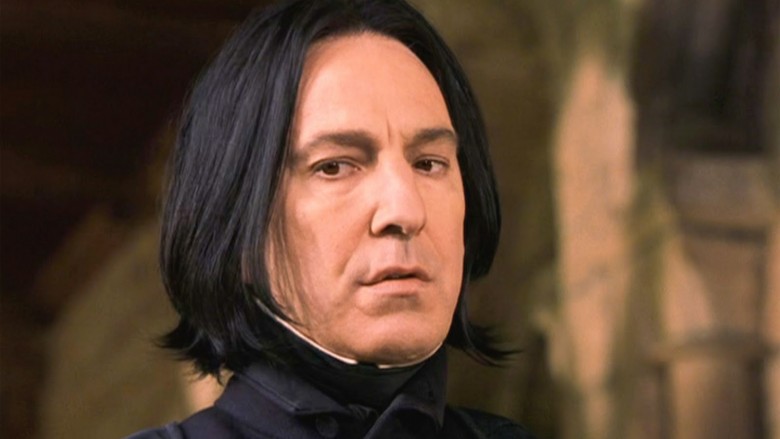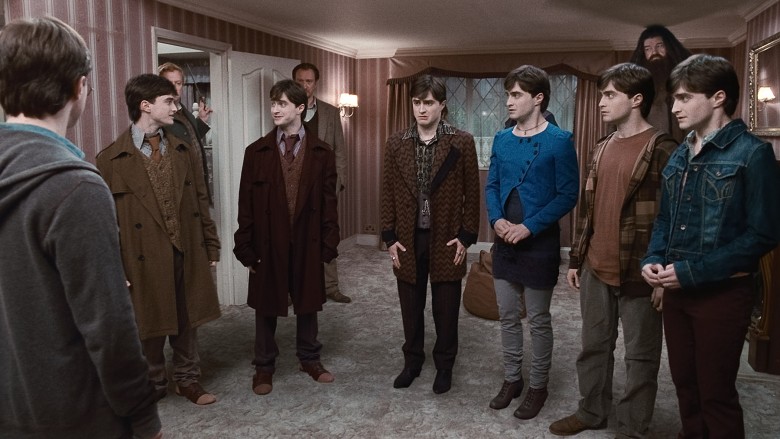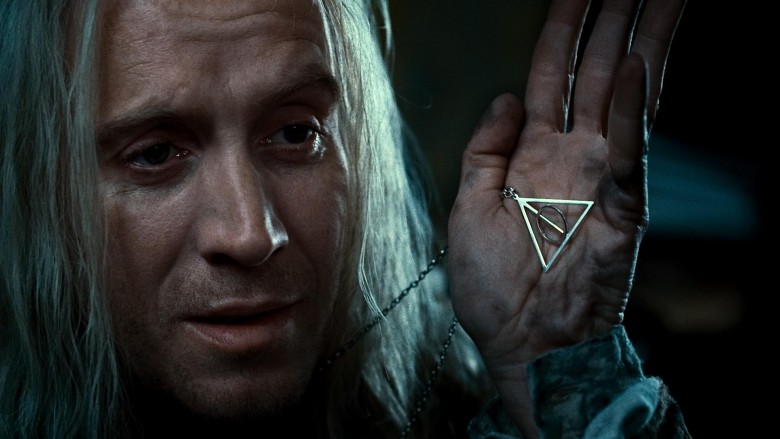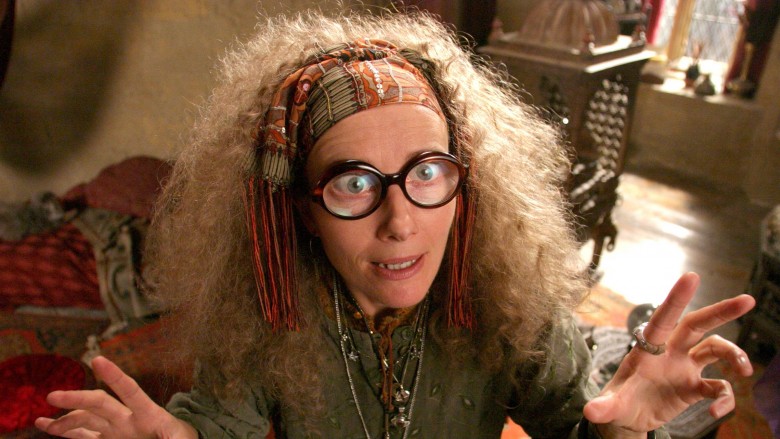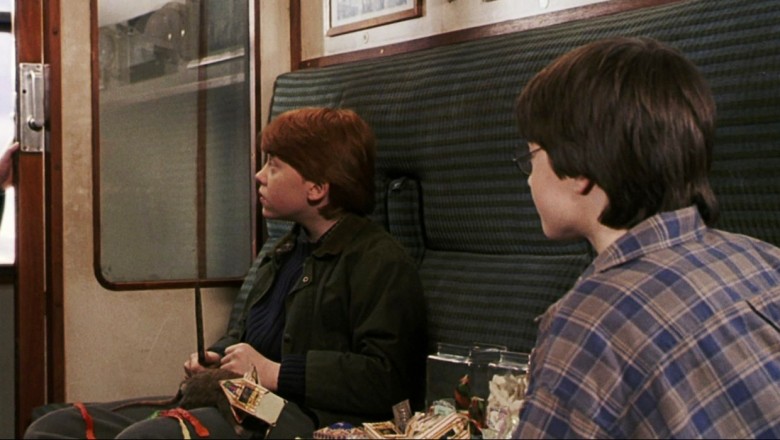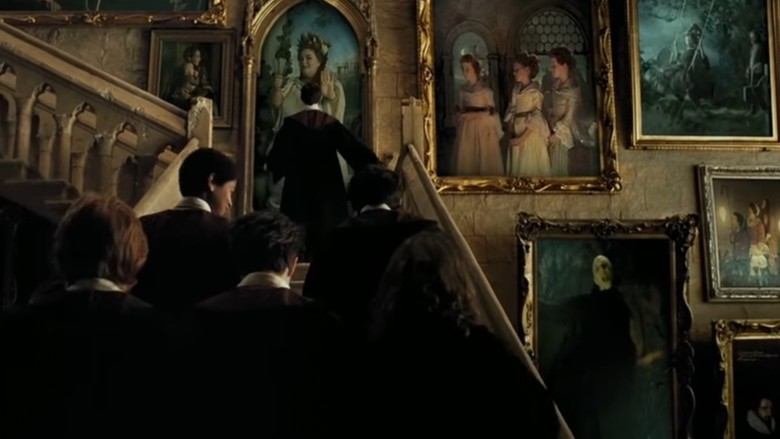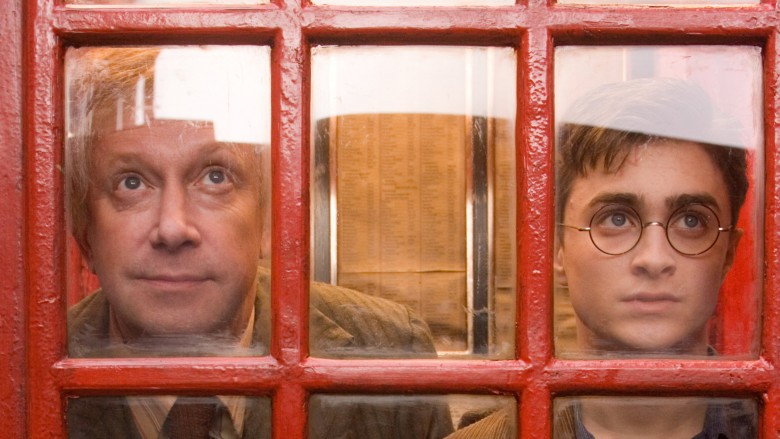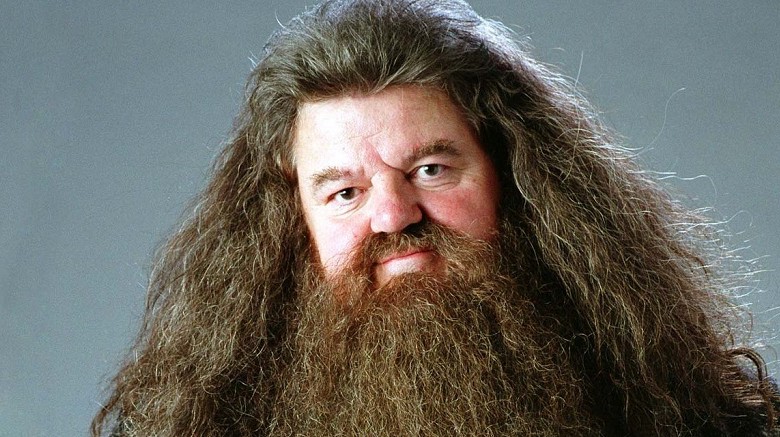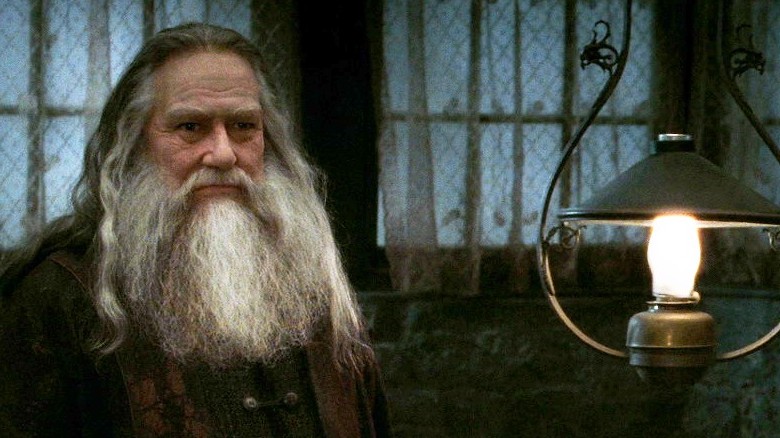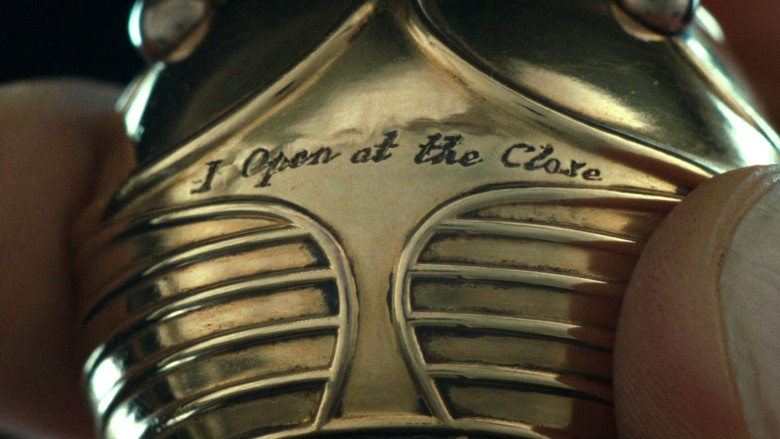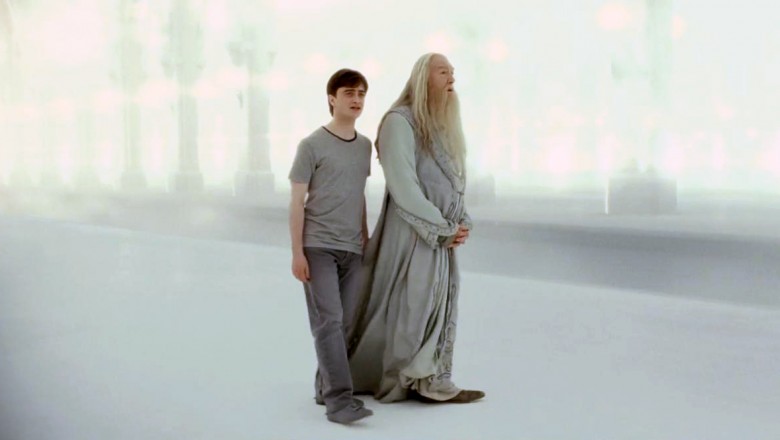Small Details That Only Die-Hard Harry Potter Fans Understand
The Harry Potter books and films have no doubt been combed through ad nauseum by everyone who really wishes they'd been given an acceptance letter to Hogwarts on their 11th birthday. But there are some details in the resulting movies that only die-hard Potterphiles could really pluck out. Here are some Harry Potter Easter eggs that only bona fide members of Dumbledore's Army would've caught in the books and films.
Snape's coded message
It took a full series for Harry Potter to figure out that Professor Snape wasn't actually out to get him and make his stay at Hogwarts miserable. If he was a star student of language like his pal Hermione, though, he might've been able to unlock the Half-Blood Prince's true intentions long before he got a screening of Snape's memories through Dumbledore's Pensieve in the final chapter. In Harry Potter and the Sorcerer's Stone, Snape challenges Harry to answer "what would [he] get if [he] added powdered asphodel to an infusion of wormwood." And it seems like a chest-inflated check to Harry's sudden star status as the big man on campus, born of hatred and disgust. But in retrospect, superfans have found a little more weight to those words.
See, asphodel is actually a member of the lily family and can invoke the phrase "my regrets follow you to your grave"; wormwood means something "bitter and grievous." This has led many to believe that Snape was really just telling Mister Potter that he was bitterly regretful of his mother, Lily, passing away. Given the fact that he loved her most of his life and clutched her corpse in agony the day he discovered The Boy Who Lived, that makes a lot of sense, then, doesn't it?
So much seven
Harry Potter's number on the Gryffindor Quidditch Team is seven, and it's no accident: he's the seventh of Voldemort's horcruxes, after all, and there are seven books in the series. So the filmmakers went to painstaking efforts to include the fabled numerology throughout the series, whether you noticed it or not. There are a ton of things that just so happened to add up to seven throughout the movies, like the headcount on snakes that line the door to the Chamber of Secrets, the number of players on each Quidditch team, the number of children in the Weasley family, and the number of locks on Mad Eye Moody's trunk, to name a few.
Deathly Hallows everywhere
Speaking of visual iconography, the movies also made a point of flashing the sign of the Deathly Hallows during pivotal scenes as well. For example, in Harry Potter and the Goblet of Fire, long before we'd ever find out about the Peverell siblings' story, Dumbledore gazes upon his collection of artifacts in his office, and they're arranged in such a way as to give a wink to the triangle-circle-line symbol that would represent the Cloak of Invisibility, the Resurrection Stone, and the Elder Wand later on in the story. Another example is in Harry Potter and the Deathly Hallows: Part 2, when Harry, downtrodden about Dobby's death, looks in the shard of mirror the house elf had in his possession. The lens of his glasses and a streak of glare create the symbol for a split second as well, seemingly reminding him of his mission to destroy Voldemort's horcruxes. Fans could launch a full-scale Easter egg hunt to find all the other nods to this paramount piece of symbolism because it's been scattered throughout the film series in small moments such as these.
Trelawney's prophecies
Hermione Granger didn't care much for Divination, but Professor Trelawney's prophecies did turn out to be astoundingly accurate, even when she seemed her kookiest. The one that most people point to as prescient in retrospect is when she declined a dinner invitation in Harry Potter and the Prisoner of Azkaban because 12 people were already seated and 13 is unlucky. (The theory then was that the first person to rise from a table of 13 would be the first to die, and, as fate would have it, Sirius Black stood first from a table of such number in Harry Potter and the Order of the Phoenix. And yes, he died first.)
But it takes an especially keen sensibility to ferret out that her birthday claim about Harry was also ultimately on point, even though it seemed way off at the time. In the same chapter, she said she thought he was born in midwinter, but he answered that his birthday was actually in July. However, Voldemort's birth date was New Year's Eve, and since Harry had a piece of Voldemort lodged in his soul after surviving the attack on his family, well, she was kinda right then, wasn't she?
Plus, of course, she totally called it when she said, "The one with the power to vanquish the Dark Lord approaches ... born to those who have thrice defied him, born as the seventh month dies ... and the Dark Lord will mark him as his equal, but he will have power the Dark Lord knows not ... and either must die at the hand of the other for neither can live while the other survives ... the one with the power to vanquish the Dark Lord will be born as the seventh month dies."
The chocolate frog bookend
There's a small wink to Harry's first journey on the Hogwarts Express contained in the very last scene of Harry Potter and the Deathly Hallows: Part 2. During his first ride, when he initially befriended Ron Weasley, he'd used his new pocket full of galleons to buy "the lot" of treats on the trolley, and he and Ron stuffed their faces with all the bewitched goodies they could stomach. One of the chocolate frogs, however, got away and hopped through the window, which wasn't so much of a problem for Ron since he was more interested in collecting the character cards that came with them anyway. In the final film, as Harry and Ginny's children board the same train with Ron and Hermione's kids, the chocolate frog returns to the window as a nod to the start of a new story.
Voldemort was in Hogwarts the whole time
In the film version of Prisoner of Azkaban, there's a moment when the students are walking through the staircase when an unexpectedly familiar face pops up in a portrait: Lord Voldemort. It's a blurred and fairly quick pass-by situation, but that's gotta be him–a Nosferatu-like bald wizard in flowing black capes reaching out to the students that pass him by in his menacing way.
If it seems odd that Voldemort's portrait would be included in the halls of Hogwarts, that's because it is. Not only was he dubbed "He-Who-Shall-Not-Be-Named" by everyone and kept far, far away from the mainstream of the wizarding community, but Ralph Fiennes hadn't yet arrived as the character. It'd be a whole 'nother installment, Harry Potter and the Goblet of Fire, before he'd plant a mole in the Triwizard Tournament proceedings and to show up to nab Harry Potter and off Cedric Diggory. Foreshadowing much?
Dial 6-2-4-4-2 for magic
In Harry Potter and the Order of the Phoenix, Harry is called to the Ministry of Magic to have a disciplinary hearing before the Wizengamot after producing his Patronus to save himself and cousin Dudley from a Dementor while in the Muggle realm. Mr. Weasley accompanies Harry to the hearing and takes Harry into a telephone box to get access to the Ministry. He narrates the number he's dialing to get through: 6-2-4-4-2. On a traditional telephone like that one, the letters would be arranged on the keypad as well and those digits just so happen to spell "M-A-G-I-C." That wasn't a coincidence.
Hedwig's theme
The score to the Harry Potter film series has become quite an earworm since the films were released, unmistakably belonging to the series forevermore. The introductory music has been titled "Hedwig's Theme," but the character who actually played the music during the movie was Hagrid. In Harry Potter and the Sorcerer's Stone, he plays the melody on his flute as Harry, Ron, and Hermione all rush up to him for critical information on their latest meanderings around the school grounds. Maybe it should've been called "Hagrid's Theme" instead?
Aberforth's bar
There's a scene in Harry Potter and the Order of the Phoenix when Harry, Ron, and Hermione duck out of the temporarily authoritarian-ruled Hogwarts to formulate Dumbledore's Army at Hogsmeade. When they hit up the Hog's Head, a local bar, for some private planning, they find that there's only a bartender lurking in the dark, and he's got a goat. Only J.K. Rowling's most faithful DA members would have recognized that this was an early glimpse of Albus Dumbledore's brother, Aberforth, who was obsessed with goats and owned a bar. That very establishment would later come into play in Harry Potter and the Deathly Hallows: Part 2 when the trio tries to sneak back into Hogwarts during another troublesome Headmaster switcheroo moment–this time, with Aberforth arriving to lend a hand.
Opening at the close
There's a lot that can be read into the Snitch's inscription that so famously read "I open at the close." The most obvious interpretation is that, when Harry kisses it in Deathly Hallows, it opens itself up to present him with the Resurrection Stone so he can have a pep talk with his long-lost loved ones before sacrificing himself to Voldemort to fulfill his part of the prophecy. He got it in the first book, when he started this journey, and it opened at the close. Simple enough, right?
What really gets the eyebrows raising, though, is the fact that Rowling published the first book back in 1997, when the events of Deathly Hallows took place in her timeline. So, it's also a statement that symbolizes the entire franchise as a whole. It literally opens at the close. Mind blown.
Is this all in Harry's head?
One of the grimmest fan theories associated with the Harry Potter books and films is the idea that everything magical about Harry's life outside of 4 Privet Drive was a fiction of his imagination. The idea is that Harry, who was a tortured orphan who never knew his parents and was made to live in the closet under the stairs by his cruel aunt and uncle, created this fictional reality as a coping mechanism for his circumstances. And in Harry Potter and the Deathly Hallows: Part 2, there's a momentary wink to (and possible acknowledgment of) that very possibility.
After Harry has died by Voldemort's wand and wakes up in a dreamy vision of King's Cross Station, he meets with Dumbledore, who gives him the option to stay in the living realm or go onto the beyond. Harry asks Dumbledore if this is all in his head, and Dumbledore answers in the affirmative but says that it doesn't make it any less real. Draw from that what you must.

